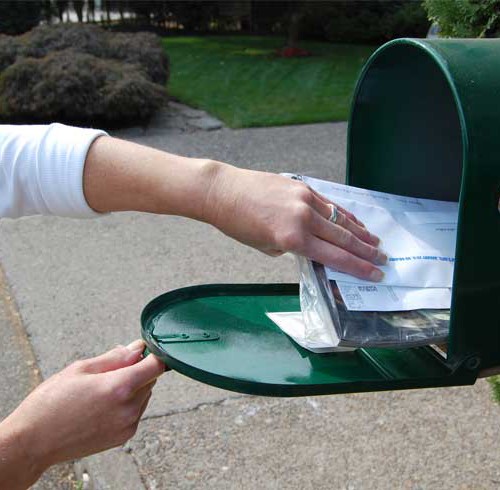How To Forecast Cash Flow
Content
Our cash flow forecasting template has a Prep Sheet tab where you can capture this information. Later, when you go through the forecasting process, the information from the Prep Sheet will auto-populate the forecasting template. Now that you know why cash flow forecasting is so important, we’re going to go through the process step by step. This article focuses on the prep work you’ll need to do before you start forecasting. What you do here is the foundation for the actual forecasting process. At this point you likely already have a lot of useful information and ideas about what’s next for your business.
Your cash flow statement is a useful tool in helping you develop your cash flow forecast. A lack of cash can be a big problem for small businesses, but having an accurate forecast can help you spot potential shortfalls several months in advance. Cash flow problems are among the top reasons why small businesses close their doors. Strong sales or profit margins won’t help you if your business doesn’t have cash on hand to pay its bills and invest in the future. As the months pass, compare your actual monthly cash flow statements to your projections for each month. If you see large differences from month to month, you need to adjust your projections and assumptions.
Enter your income, savings, and expense data to get a comprehensive picture of your short and long-term cash flow. Designed around the concept of discounted cash flow valuation based on future cash flows, this template allows you to perform an analysis to determine your business’ true value. You’ll find year-by-year rows, their respective incomes , expenses , cash outflow, net cash, and DCF details , and actual present value, all of which culminates in net present value. This DCF forecast template is also ideal for determining the value of a potential investment.
For this reason, understanding your business’s cash position at any given time can be extremely difficult without a cash flow projection. So what’s cash flow and why is cash flow forecasting so great? Cash flow is the actual cash that comes in and goes out of your business in any given period.
Not just to build a solid cash flow projection, but so they can recognize areas of opportunity and potential shortfalls. Follow these steps to perform a month-by-month, year-long cash flow projection. Or use them as a jumping-off point for further talks with your bookkeeper, regarding cash flow projections. Cash flow forecasting may be an arduous task, but it is a vital one. This critical process will not only tell you how much cash your business https://www.bookstime.com/ is expected to generate but also what it is going to need to fund future expansion and working capital. While your forecasts will never be 100% accurate, you will develop an uncanny ability to predict the future if you devote the proper resources to cash flow forecasting sooner rather than later. Most organizations don’t have the financial strength to survive even a short-term cash flow crisis, so having accurate forecasts on hand is essential.
The needs of your clients are always shifting, and the economy is ever-changing. Revisiting the forecast will help you respond and adapt faster than the competition. To succeed, business leaders should prepare for market changes. Craft a few different cash flow scenarios so you are not caught off guard if client demand slows. Having a couple of models will help you act decisively — rather than react defensively — to mitigate any adverse effect on your company’s cash if revenue slows.
Why is poor cash flow bad?
Poor cash flow slows down normal operations, future investments and overall growth objectives of your business.
Rather than making critical plans based on present circumstances, you’ll use historical data to move forward, which can be more accurate. Cash flow projections predict the amount of money entering and leaving your small contra asset account business. As the name suggests, this method uses cash flow to anticipate future business performance. And cash flow is the net amount of cash and “cash equivalents” that transfers in and out of your business.
- With a cash flow projection, you can factor in a future hypothetical situation—such as an increase in prices—and work it into your assumption on future cash flow.
- Now that we know what cash flow is (and what it isn’t), we’re equipped to talk about cash flow projections.
- A cash flow projection is an estimate of the money you expect to flow in and out of your business over a given period of time based on some sort of additional factor.
Ways To Maintain Accuracy In Cash Flow Projection
Weekly cash forecasts are used to project a company’s liquidity over the medium term, estimating the timing and amounts of cash inflows and outflows. The weekly interval forces companies to understand the details of their business at a more granular level. For example, cash inflows could be large one week if a large amount of receivables are collected, but outflows could be huge the next if payroll and rent are due. Breaking the business down on a weekly basis captures the granular movements that can be overlooked if using a month, quarterly, or yearly interval. In my experience, it can be excessive since it introduces seven times the variables as a weekly forecast, and may not improve the accuracy of the forecast. Therefore, the weekly interval provides a happy medium in achieving granularity without overwhelming detail.
When you sell an asset, you’ll usually receive cash from that sale and you track that cash in the “Sales of Assets” section of your cash flow forecast. For example, if you sell a truck that your company no longer needs, the proceeds from that sale would show up in your cash flow statement. When customers pay those invoices, that cash shows up on your cash flow forecast in the “Cash from Accounts Receivable” row. The cash basis vs accrual basis accounting easiest way to think about forecasting this row is to think about what invoices will be paid by your customers and when. If you don’t have time to track financial forecasts, consider delegating projection updates to a bookkeeper. Or, you can streamline the way you track cash flow with basic accounting software. If you want to create your own cash flow projection, start drafting out columns for your future periods.
Entrepreneurs need to learn quickly that “Cash is king” and, therefore, they must become good at cashflow forecasting. Spot problems with customer payments—preparing the forecast encourages the business to look at how quickly customers are paying their debts. Note—this is not really a problem for businesses that take most of their sales in cash/credit cards at the point of sale. Put your predicted cash receipts into the Cash Inflows section. Do your best to include all revenue sources so you can get a fairly accurate picture of your cash flow. Start with the steady income, and add in any payments that are likely to process during the six-week time span.
You don’t need an accounting background to create a simple cash flow forecast. In less than an hour per month you can create a simple spreadsheet that can be used to track money flowing in and out of the business. It will identify potential cash shortfalls before they happen so that you can manage them accordingly. Ensuring you have enough money to run your business is critical to survival. And since you can’t manage what you can’t see, having an accurate, rolling 12 Month Cash Flow Forecast is a must for all new business owners. It is an estimate of the amount and timing of all money that flows in and out of your business.
It’s also important to note that hiring for this position may negatively impact cash flow to start, but increase it in the long run as the individual ramps up. To accurately project cash flow, you must start by creating a cash flow forecast.
Six Tips For Creating A Cash Flow Forecast To Help Grow Your Business
Provided you have automated your forecasting process, these scenarios should be simple enough to produce so that you won’t have to scramble in a reactionary mode at a later date. As with just about any other successful process within a company, communication is one of the keys to accurate cash flow forecasting. The underlying problem with cash flow forecasting is that it often doesn’t provide the precision necessary to make sound business decisions. Your cash flow forecast is key to good cash flow management. Try to account for all cash sources and uses in your projection and maintain an emergency fund or back-up plan to ensure you don’t get sidelined by slow-paying customers or unexpected expenses. When you do, this simple but valuable tool can help you keep an eye on cash and ensure you don’t compromise growth or put your business in jeopardy. For example, say Wayne Enterprises ships $50,000 worth of product to customers in January, along with invoices that are due in 30 days.
Step 1 Enter Your Beginning Balance
How do you calculate monthly cash flow?
How to Calculate Cash Flow: 4 Formulas to Use 1. Cash flow = Cash from operating activities +(-) Cash from investing activities + Cash from financing activities.
2. Cash flow forecast = Beginning cash + Projected inflows – Projected outflows.
3. Operating cash flow = Net income + Non-cash expenses – Increases in working capital.
More items•
Then, if there’s a hiccup, you have a cushion to prevent negative cash flow. If all looks well, a solid cash flow projection may help you gain future investors bookkeeping or win a new business contract. Running regular cash flow projections is important because it can help you steer your business toward the future.
Cash Flow Forecast Template
At the time, I was working for a distribution business that served companies in the transportation and construction industries. However, with the forecast, we were able to glean insights into when people were coming into our stores, and when cash was actually hitting our bank account. Despite the tough economic environment, basic “blocking and tackling” business performance improved as did cash flow. We realized that sales spiked on certain days of the month due to certain buying patterns.
Cash Flow Series #3: Making Projections Using Your Cash Flow Forecast
Conversely, if sales pick up, the forecast will help you to better allocate resources to grow the business. The cash flow statement is the go-to document to understand the cash needs of your business. That’s because it factors in noncash expenses, such as depreciation and amortization. It also reflects cash outflows and inflows from operating activities , investing activities and financing activities .
With an accurate cash flow projection, you can see the consequences business decisions you make today will have in the future. Before you create a cash flow projection for your business, it’s important to identify your key assumptions about how cash flows in and out of your business each month. You can also consult your cash flow projection to determine Cash Flow Forecast the best time to invest in new equipment, hire new staff, revise your pricing and payment terms, or when to offer promotions and discounts. After the end of each month, be sure to update the projection accordingly, and add another month to the projection. A cash flow projection is essentially a breakdown of expected receivables versus payables.









Warning: count(): Parameter must be an array or an object that implements Countable in /home/pg4b1yzvrqqo/domains/test.drivingsalesnews.com/html/wp-includes/class-wp-comment-query.php on line 399